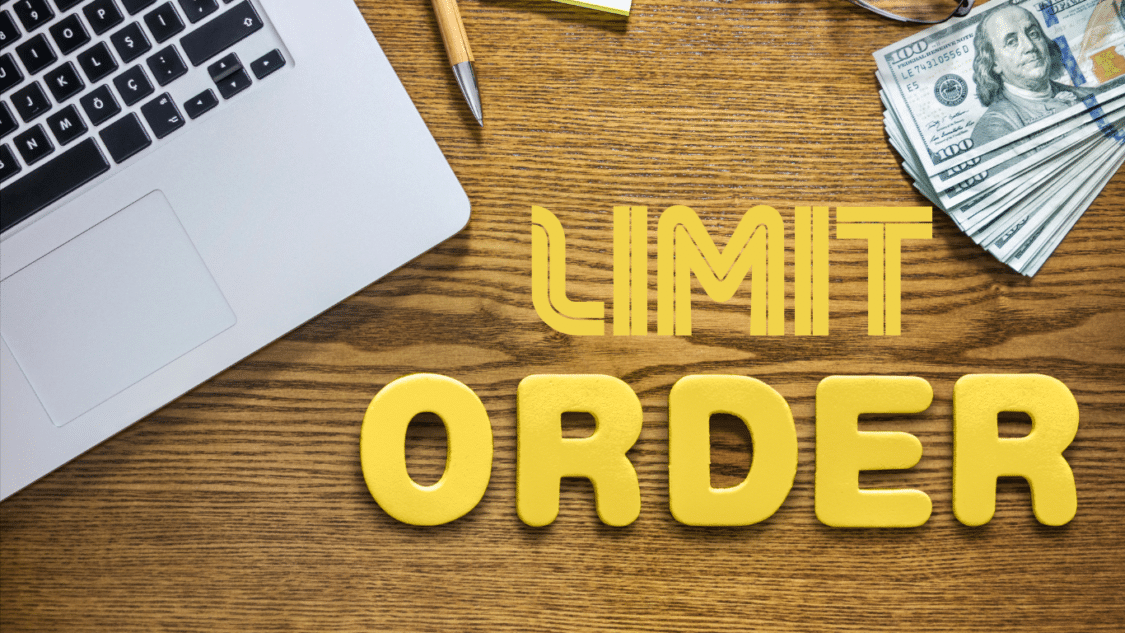In today’s article, we’ll discuss the different order types pertaining to the trading world.
Market Order

A market order is when you sell or trade a stock at the market’s price. The idea behind a market order is that the investor has no control over the amount paid for the purchase or sale that he will be making. Instead, the price is decided and set by the market. A market order can often be risky due to a fast-moving market. The reason is that if a stock is widespread and is traded excessively, the trade orders done before yours can affect the price you end up paying.
Limit Order
The second type of order we’ll be discussing is a limit order. This type of order prevents investors from selling a stock or trading at a price they don’t want. Hence the name Limit Order. If the market price deviates from the limit order price, the execution of the order will not be completed. A limit order is sometimes known as a buy or sell limit order.

Let’s learn the difference between a buy-limit order and a sell-limit order. The buyer specifies the amount of his limit order and will not pay more than that amount per share. In contrast, a sell limit order is used by a seller. This order specifies that the seller will not sell a share for less than $x per share, where $x is the seller’s limit order.
Stop Order
This order’s goal is to limit the losses of investors. It protects the investor when it sells a stock only when it reaches a specified price. A stop order is typically associated with a long position but can also be used with a short one. It will be purchased if the stock moves over the stop order price.
Stop Limit Order

A stop-limit order combines a stop order and a limit order. This order requires the specification of two price points. The limit price and the stop price. When the stock’s price reaches a certain point, it becomes a limit order. In contrast to a stop order type, a stop-limit order guarantees a price limit. On the other hand, a stop order assures order execution but not at the stop order price.
Trailing Stop Order
A trailing stop order shares similarities with a stop order. On the other hand, a trailing stop order relies on the percentage change in market price rather than a fixed target price. A trailing stop is more adaptable and flexible than a fixed stop-loss order type. It automatically follows the direction of the stock’s price and does not need to be manually reset.
Instant Order
An instant order can be used when you want to spend x USD to buy Bitcoin. This order type will find sellers in the order book and make the proper trade. The number of coins they offer is not relevant. This order can also be used to sell. The trader needs to specify the amount of bitcoin he wants to sell, and the order will be completed using the current market price.
What factors should traders consider when deciding which order type to use?
Traders should define their trade objectives clearly. Market orders may offer speed but may lack the desired price, while limit orders allow for price control without guaranteeing immediate execution. Traders should be sure to assess the current market conditions. In fast-moving markets with high volatility, market orders can work better for quick execution. In slower or less liquid markets, limit orders can be beneficial for catching better prices.
Risk management is crucial in trading. Traders must assess their ability to handle risk and establish appropriate stop-loss levels. Using stop orders like stop-loss or stop-limit orders can aid in containing losses and safeguarding capital if the market takes an unfavourable turn. Traders need to consider the depth of the order book, which provides insight into the quantity of buying and selling orders across different price points. A deep order book with high liquidity can benefit limit orders, as there is a higher likelihood of getting the desired execution price.
Short-term traders like day traders or scalpers may prefer market orders for quick entry and exit. Traders with longer time horizons, such as swing or position traders, may benefit better from limit orders. Traders need to align their order type with their trading strategy. Traders should also consider the cost included with each order type. Some brokers may charge different fees for market orders and limit orders. It’s important to factor in these costs while selecting the appropriate order type.
What are the advantages and disadvantages of using order types?
Utilizing different order types in trading offers several advantages and disadvantages. One of the common advantages is the increased control over trade execution. When initiating limit orders, traders can set specific entry or exit prices, enabling precise execution and securing better prices. This level of control can be particularly advantageous for traders holding particular price targets or those who want to minimize slippage.
Another significant advantage is the ability to manage risk effectively. Stop orders enable traders to set predetermined exit points to limit losses. These orders automatically initiate trade once the price reaches a certain level, helping traders protect their capital and stick to their risk management strategies.
The availability of different order types gives traders flexibility in adapting their strategies to other market conditions. Market orders are suitable for fast-moving markets where immediate execution is required. In contrast, limit orders are helpful in markets with lower liquidity or when traders want to enter or exit at specific price levels. With a range of order types, traders can tailor their approach to suit the general market environment.
However, using different order types also comes with certain disadvantages. Although market orders offer fast execution, they need to ensure the desired price, which could lead to slippage. In contrast, limit orders may result in missed opportunities as they only execute when the set price is met and not instantaneously. Moreover, relying too heavily on complex or advanced order types can increase the risk of execution errors. Traders need to understand the depth and purpose of each order type and consider the potential drawbacks before incorporating them into their trading strategies.
The advantages of using different order types include control over execution, risk management capabilities, flexibility, and customization. However, traders must also know the disadvantages and make informed decisions based on their trading goals, risk tolerance, and market conditions.
What are the considerations for choosing an order type when trading different financial instruments, such as stocks, options, or futures?
The choice of order type may differ when trading stocks, options, or futures. A trader must consider the unique characteristics of each instrument. Highly liquid instruments like actively traded stocks may be more conducive to market or limit orders due to the high liquidity and narrow bid-ask spreads. However, options and futures trading involves additional considerations, such as contract specifications and expiration dates. This may require specific order types like options orders or futures orders. By assessing the market liquidity and instrument-specific factors, traders can choose the most suitable order type to ensure efficient and effective trade execution while accommodating the nuances of each financial instrument.
Important Info to Keep in Mind:
The concept of time in force should be considered when deciding on an order type. Time-in-force refers to the duration an order stays active in the market. It is also critical to consider how different order types handle partial fills. Traders are urged to consider their preference for partial fills, and they should proceed with their decision accordingly.
Conditional orders enable traders to associate their orders with particular circumstances or developments in the market. An illustration of the functionality available to traders is the capacity to establish trigger orders, which become operational when a predetermined price threshold or indicator value is achieved. This order type allows traders to mechanize their entry or exit plans on preconceived market circumstances.
Closing Thoughts – Different Order Types
If you are familiar with these basics, you’ll find it simpler to explore all the order options that exchanges provide. In conclusion, utilizing different order types in trading can significantly enhance a trader’s ability to complete trades effectively and manage risk. Market orders provide speed and fast execution, while limit orders offer control over trade prices. Stop orders help protect against adverse market movements and automate risk management. The advanced order types give traders even more power to adjust their strategies to fit different market situations, thanks to their numerous customization options and flexibility.
However, traders need to weigh the advantages and disadvantages of each order type and make decisions based on trading goals and risk tolerance. By combining a diverse range of order types into their trading strategy and considering market dynamics, traders can enhance their trading efficiency and increase the potential for successful outcomes.
For more news updates, visit our homepage now and see our latest news article. Want to learn more about trading? Visit our education page now and learn for FREE!

